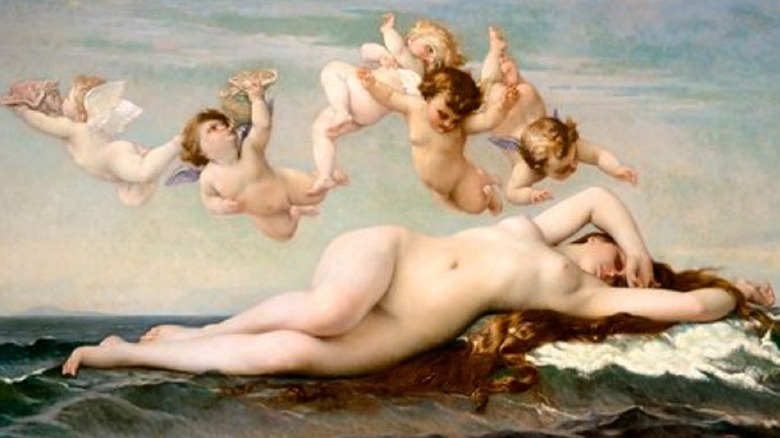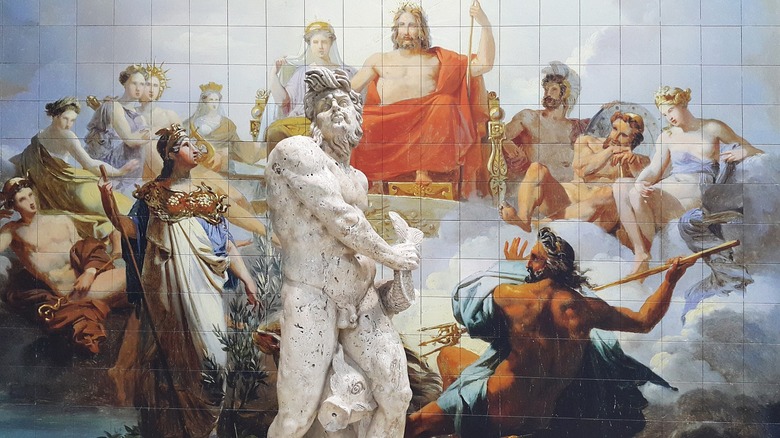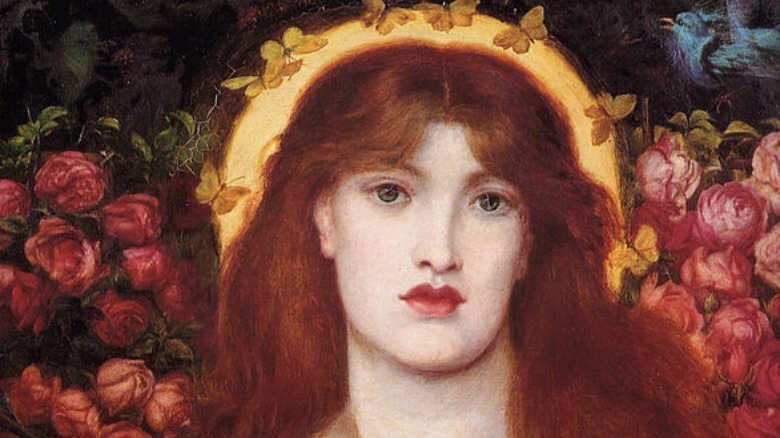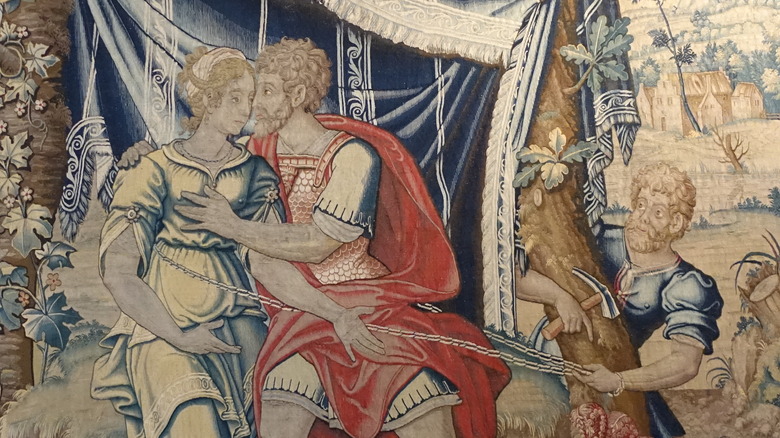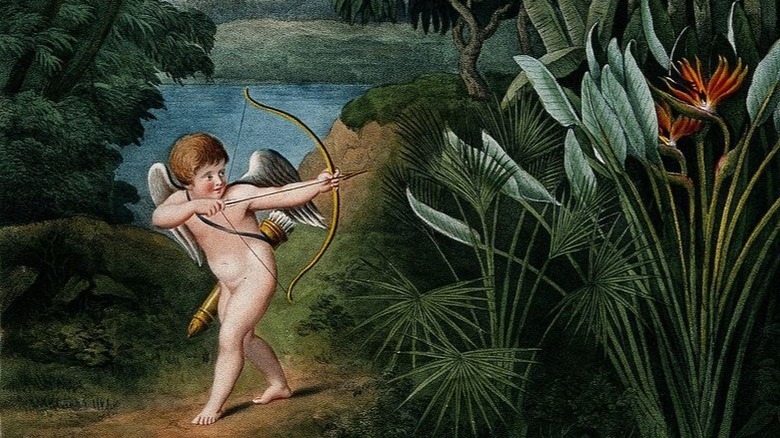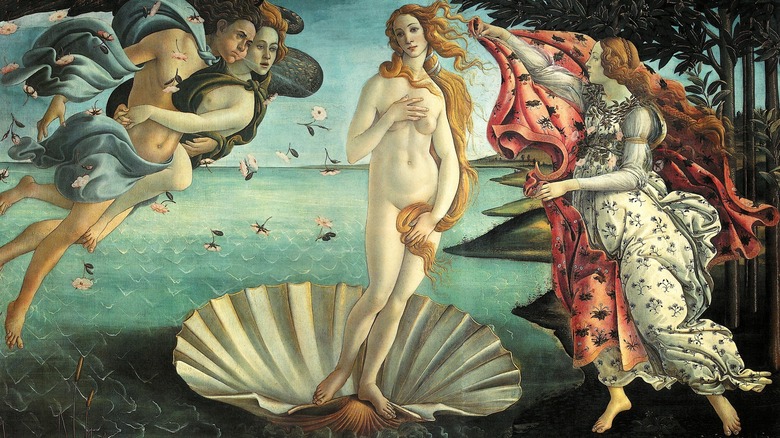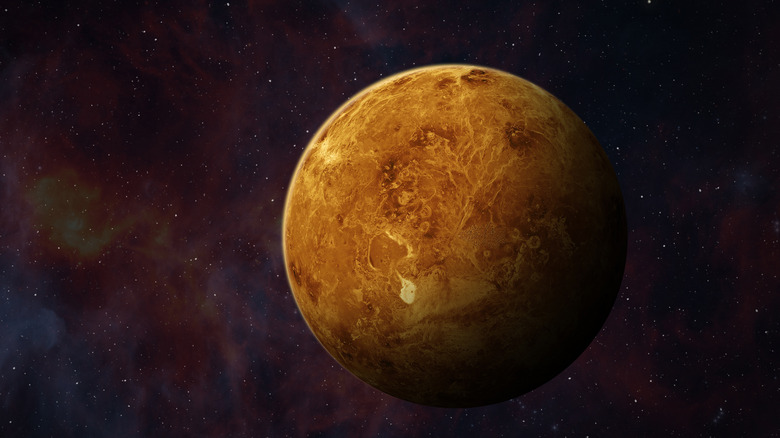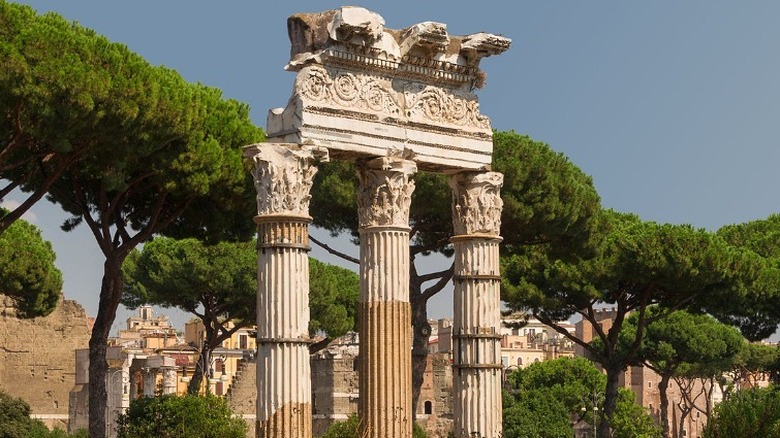The Myth Of Venus Explained
Like many other gods, Venus was created after the blueprint of a Greek deity, in this case the goddess Aphrodite, known for being a protector of love, beauty, passion, and desire.
A combination of several different deities from various Middle Eastern and European cultures, prehistoric and ancient civilizations, Venus had many different sides. Called by many names, she was connected to several cults, festivals, and rituals that celebrated life, death, fertility, and pleasure. Firmly implanted in Roman politics and aristocracy, her tasks weren't only divine — she interfered with very earthly matters as well, such as the formation of the Roman empire.
Her mysterious nature was subjected to different cultural interpretations, and through the centuries, she lost a great deal of her original power. But, an eternal inspiration for many classical artists, she survives today — one can still meet her at many ancient temples and in works of both historical and contemporary art. Here is the myth of Venus explained.
Venus was adopted from the Greek pantheon
As explained by Mythology Source, Venus first reached Italy during the Second Punic War, in 217 B.C. The Romans were worried that they would lose the war against Carthage, so they consulted an oracle, who said that if they manage to convince Venus Erycina, the Sicilian goddess, to help the Romans instead of Carthage's allies, they will win. The Romans didn't hesitate and stole the image of Venus from the Sicilian temple in Eryx, bringing her back to Capitoline Hill. They won the war, which confirmed their belief that Venus belonged with them.
To further validate this connection between Venus and the Romans, they looked for a proof in Homer's "Iliad." According to Homer, Aphrodite had a son, Aeneas, who was also a cousin of the Trojan king. He survived the Trojan war, and despite the fact that Homer didn't mention what he did after the war, the Romans claimed they knew –- as per Roman poet Virgil, Aeneas fled Troy and sailed to Italy. Stopping in Carthage on the way to Rome, he rejected Phoenician goddess Dido's hand, so she cursed him and all his land. He married Roman king Latinus' daughter, Lavinia. One of the couple's descendants was Rhea Silvia, mother of Romulus and Remus, the twin brothers who established the city of Rome. The Romans were therefore direct offspring of Aphrodite, who was merged with Venus Erycina (Phoenician Astarte) and Latin goddess Venus Obsequens.
The goddess of love
Ultimately, Venus was a goddess of love. But, with love having many faces, her patronage became vast and complex, spreading into many different areas of human lives. Mythology Source explains that Venus was a goddess of contradictions and mystery, purity and desire, family affairs, fertility, and peace. She was also a goddess of charm, persuasion, union, and marriage. She was a peacekeeper, not just among the couple or family members, but of the whole Roman nation. Her counterpart was Mars, the god of war, so she had to take care of diplomacy and negotiations.
Venus' Greek counterpart, Aphrodite, was much darker and carnal, dominating the realms of desire, which can soon turn into destruction and obsession. The blueprint for Aphrodite were pre-Classical fertility cults of Mediterranean area, which firmly connected sex and destruction. Historian Bettany Hughes explains (via the Sydney Morning Herald), "...in a region that spans modern-day Iraq, Syria, Jordan, Lebanon, Turkey and Egypt, from at least 3000 BC onward women and men watched one another and generated in their minds a sex-and-violence deity to explain the tempestuous and desirous nature of human behaviour." But these deities were hermaphrodites. Only when societies started to polarize between sexes and man took over militaristic roles, did the patrons of this desire became goddesses. Suddenly, "the wildness of war, and passion, took female form." But, with civilization evolving, many of these darker aspects were omitted, watering down the chaotic parts and focusing on shallower aspects of human beings instead.
Originally, her domain was spiritual love, not physical
If Aphrodite was in charge of physical love, romance and infatuation, Venus' role was more metaphysical. As per Mythology Source, Venus Obsequens (the native Italian goddess) was connected to magic and divinity. The love that Venus' dominated was thus not only found among humans, but between humans and gods, as a bond with the sacred. The reason for this could be found in the general concept of how the Romans perceived their gods. They "were much less humanized than those of the Greeks and tended to represent more abstract ideas than immediate emotions," as per Mythology Source.
Because Venus commanded the realms of persuasion, people prayed to her to persuade other gods according to one's desire. But, while other gods, such as Jupiter and Mars belonged solely to the state affairs, Venus was still a personal deity. She listened to individuals, not just the senate.
But the sacred were also closely intertwined with political affairs. Mythology Source explains that "In the later Republic, it became fashionable for Rome's elite to claim descent from one or more of the gods. This was a common way for kings and hereditary rules to legitimize their claims to power, so the Romans adopted the custom to apply to the entire patrician class's status." Gaius Julius Caesar often indicated his family connection with Venus (through Ascanius, the son of Aeneas). This bond allowed his family, the Julii, to rule the Roman Empire for more than 300 years.
Venus had many faces
Similar to other Roman gods, Venus had various functions in the lives of the people, resulting in different epithets, names which referred to her diverse aspects. As per J. Linderski (via Oxford Classical Dictionary) these were "either descriptions used informally or true names occurring in actual cult (attested in formulas, dedications, and names of temples), although strict distinction is not always possible." They could describe a character, special feature, geographical or local descriptions, connection with other gods, civic standing of a deity, or functions or manifestations of a deity. Venus was one of the goddesses who had many, over 30 different epithets.
Venus Felix was in charge of luck, impacting fate in one's favor. Venus Cloacina, the purifier, was known for bringing reconciliation and peace. Venus Heliopolitana was a direct descendant of Venus' mother goddesses, the Semitic goddess of love and hunting, Astarte. Venus Caelestis was portrayed as the supreme female goddess. Venus Victrix brought victory over men's hearts, while Venus Libitina overlooked funerals and undertakers. Venus Verticordia took care of promiscuous girls, while Venus Genetrix was the mother of the Roman state and aristocratic class (via Mythology Source).
She had many lovers
The Tale of the Bronze Net describes Venus' marriage to Vulcan, an old and unattractive god of the night. There was no love in this marriage, so when Venus met fit and charming Mars, she committed adultery in her matrimonial bed. The angry Vulcan decided to catch them red handed, so he created invisible bronze chains to trap the lively couple in the act. Venus and Mars got exposed, and according to Ovid's version of the story, the tale ended with the gods laughing at the infatuated couple. Homer's version, however, concludes with Neptune negotiating the couple's freedom and Venus returning to Cyprus (via ThoughtCo).
According to World History, while Venus never had a child with Vulcan, she was quite fertile with Mars, giving birth to Timor, Metus, Concordia, and Cupid. She also got involved with Hermes, giving birth to Hermaphroditos, and Fortuna. From her fling with Bacchus, Priapus was born, and there is some speculation that the Graces were also hers, although this is not confirmed (they are more often credited to Eurynome).
But the lover of her life, according to Ovid's "Metamorphosis," was Adonis, the most beautiful man who ever walked the earth. After Venus accidentally scratched herself with Cupid's arrow, she became obsessed with Adonis. She was willing to leave her goddess life behind and live in the woods with this heavenly mortal. But he was careless and got killed in a fight with a wild boar, which broke Venus's heart forever (via The Collector).
The mother of Cupid
As already mentioned, Venus and Mars (some sources mention Mercury) had many children. One of them was Cupid, also known as Eros in the Greek version of tale. With his magical bow and arrows, with which he could make people fall in love, Cupid is generally seen as a beneficial creature, a chubby child running around in tiny armor.
But, according to Time, originally, Eros wasn't as nice as the Roman version. He was known for bringing madness and obsession, the type of love that creates destruction. When the social status of women in Athens crumbled, around the 4th century B.C., the role of Eros changed as well –- his chaotic endeavors somehow became Venus' fault. Suddenly, she was responsible for all the destruction he caused, since these were all her ideas. Apparently, if the source of evil was a woman, and Eros was only an infant following her orders, people had nothing to be afraid of.
On one occasion, Eros shot an arrow at Apollo, who helplessly fell in love with the nymph Daphne. But, to make Apollo suffer, Eros also shot Daphne with a leaden arrow, which made her hate Apollo in return. In another story, Venus became jealous of the beautiful Psyche, so she tried to convince Cupid to make her fall in love with a monster. Cupid fell in love with Psyche instead and married her (via History).
Venus was born out of sea foam
One of the first written records of the myth of Venus (Aphrodite) can be found in the 8th-century poem "Theogony," composed by Greek poet Hesiod. This collection of oral traditions and myths is one of the main sources for early Greek mythology, along with the writings from Homer. These two collections served as a template for the majority of the later Greek literature as well as Roman mythology, compiled by Ovid (via World History). There are several different versions of this myth, in some versions the father is Saturn, in others Uranus, sometimes the location is different, and even the name of the goddess varies.
The myth of Venus' creation tells a brutal story of violence, incestual family relations, and wild forces of nature. As per Brittany Hughes (via the Sydney Morning Herald), Gaia, the ultimate earth goddess, was tired of her relationship with her husband-son Uranus, god of sky. She convinced her other son Saturn (Kronos) -– the god of time –- to intervene. He cut off his father's penis and threw it into the sea. When flesh and blood merged with sea water, a foam started to develop. Traveling the Mediterranean sea, from the island Kythera all the way to Cyprus, when this foam reached the shore, Venus (Aphrodite) was born. Nature bloomed all around the goddess, who was accompanied by spirits of summer, winter, time, and good order.
There is a rock where she came out of the sea
One version of the myth talks about how Venus landed in Cyprus, and one can still visit the rock from which she reportedly emerged centuries ago. Aphrodite Rock or Petra tou Rimiou is located near the main road connecting the cities of Paphos and Limassol, surrounded by the Mediterranean Sea. But, with Cyprus being divided between Turkey and Greece, many speculate that Aphrodite was not originally constructed by the ancient Greeks. The cult of Aphrodite celebrated Aphrodite in many ways and in many different places across the island. In some versions of the legend, Aphrodite first landed on the Greek island of Kythira.
With Aphrodite combined from numerous goddesses, such as nude goddess Cypria, Egyptian goddess Hathor, Assyro-Babylonian goddess Ishtar, and Syro-Palestinian goddess Astarte, the cults were a mixture of various influences, as reported by World History. But, when the era of Ptolemies ended after Cleopatra died, Cyprus became colonized by the Roman Empire. In that time, the island became the prime location for those who devoted themselves to the cult of Venus. They've gathered at Yeroskipou for springtime celebrations, performing "mystic rites featuring sacrifices of virginity and religious prostitution." When Christianity took over by the 4th century, many of these rituals were converted into Easter celebrations.
She has a planet named after her
According to Britannica, the planet Venus is closer to Earth than any other planet. Its proximity to the Sun's orbit makes it the brightest planet in the sky, visible around sunrise and sunset. The planet was well known in ancient times, and many civilizations, from Egypt, China, and Greece to Central America, studied its movement. The ancient Babylonian civilization connected the planet with the goddess Ishtar around 3000 B.C., and this is where the planet got its modern name. Ishtar was the main Mesopotamian deity, known as the goddess of love and war. While the goddess is "the first known deity for which we have written evidence," she is not mentioned often in modern society (via World History).
Due to the interlacing of Earth's and Venus' orbits, the latter exhibits phases similar to those of the moon. It was this discrepancy with other planets that pushed astronomer Galileo to question the idea of a geocentric model of the universe –- Venus' phases proved the theory inconsistent. This was the foundation of the Copernican theory, one of the most important discoveries of the time, which stated that planets actually revolve around the Sun, not the Earth (via Britannica).
According to World History, Venus appears in Virgil's Aeneid as well. Aeneas, the Trojan hero who left Greece and settled in Italy, the grandfather of the Roman Empire, was led by Venus (the evening star) on his search of the new land -– Latium, later Rome.
Her month is April
According to "The Stories of the Months and Days" by Reginald C. Couzens (via Sacred Texts), April belonged to Venus. But there are several explanations on the etymological origins of the word April. Some believe that the name April is derived from the Latin word aperire, meaning "to open." The month of April marks the beginning of spring, when nature starts to open and prepare for blooming. Others theorize that since months were often called after gods, Aphrilis could easily derive from Aphrodite, the goddess of love.
The Venerable Bede, a Northumbrian monk, claimed that Easter is named after the Anglo Saxon name for the month April, Oster-monath, referencing the goddess Eostre, who had a festival at that time. April was the second month of the Roman calendar, and had 29 days. Around 450 B.C., January and February were added, pushing April to the fourth place. When the Gregorian calendar was introduced in the 16th century, an extra day was added, and from then on April had 30 days (via Dictionary).
She had many cults and temples
In line with various epithets Venus had, many different cults were formed around her. The cult of Venus Erycina was named after Mount Eryx, located near Trapani on the island of Sicily. The deity of impure love, she was a patroness of sex workers, who weren't allowed to attend ceremonies on the Capitoline Hill (via Encyclopedia Mythica). According to the Dutch historian Jona Lendering, the temple dedicated to Venus Erycina was built on a site where a Phoenician temple of the goddess Tanit existed. It was the Carthaginians who transformed the temple and dedicated it to Venus Eryx before the Romans colonized the island. In Roman times the temple was known after Aeneas, who allegedly dedicated it to his mother.
As per historian Martini Fisher, the cult of Venus Verticordia was created around 220 B.C. as a response to a widespread practice of sexual offenses among Roman society. They created a statue of Venus Verticordia, enthroned by the most sexually pure female a committee of Roman matrons could find, and stored it in the temple of Fortuna Virilis. In 114 B.C., Venus Verticordia got her own temple, with the intention to "persuade Romans of both sexes and every class, whether married or unmarried, to cherish the traditional sexual proprieties and morality known to please the gods and benefit the State." During ceremonies dedicated to her, the statue from the temple was taken to men's Roman baths, where it was undressed and bathed in warm water.
